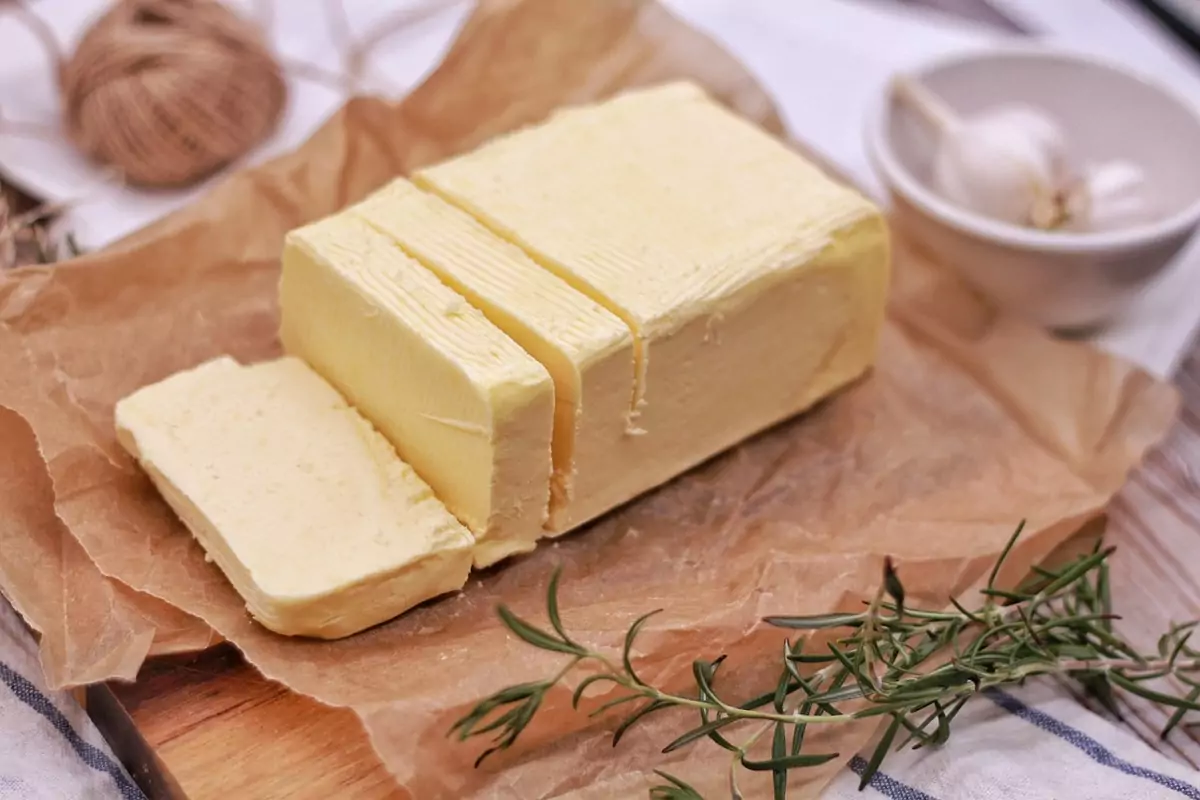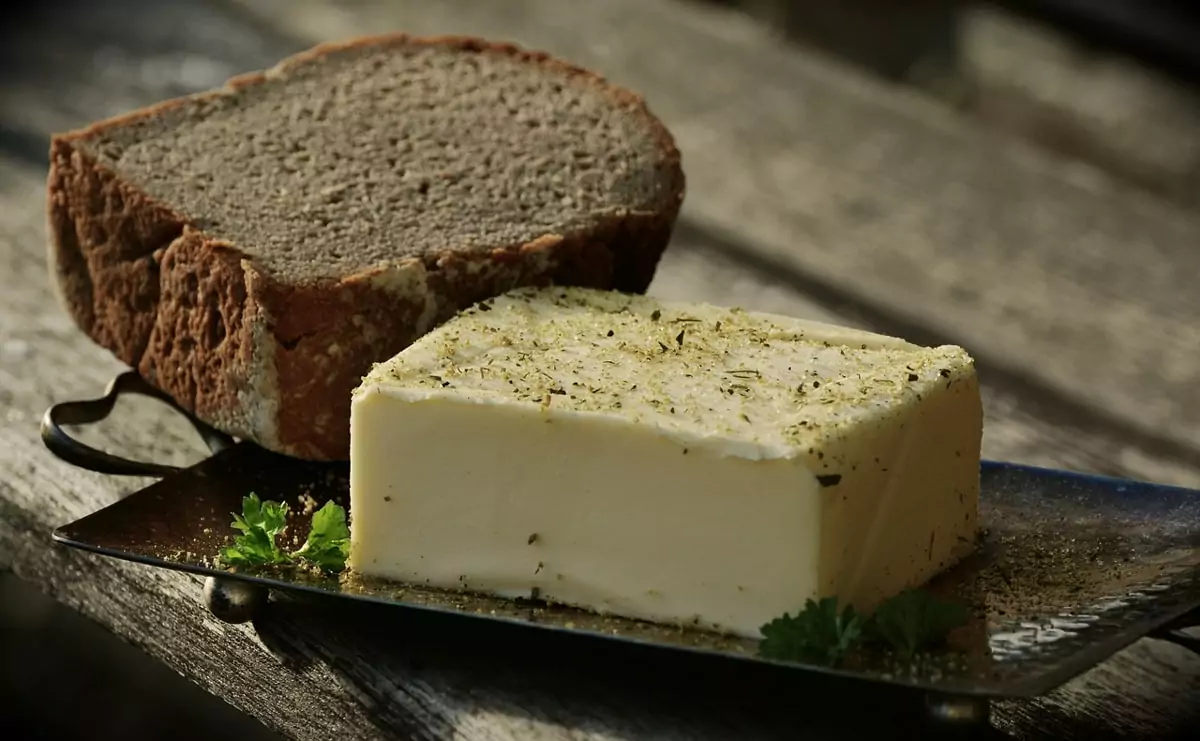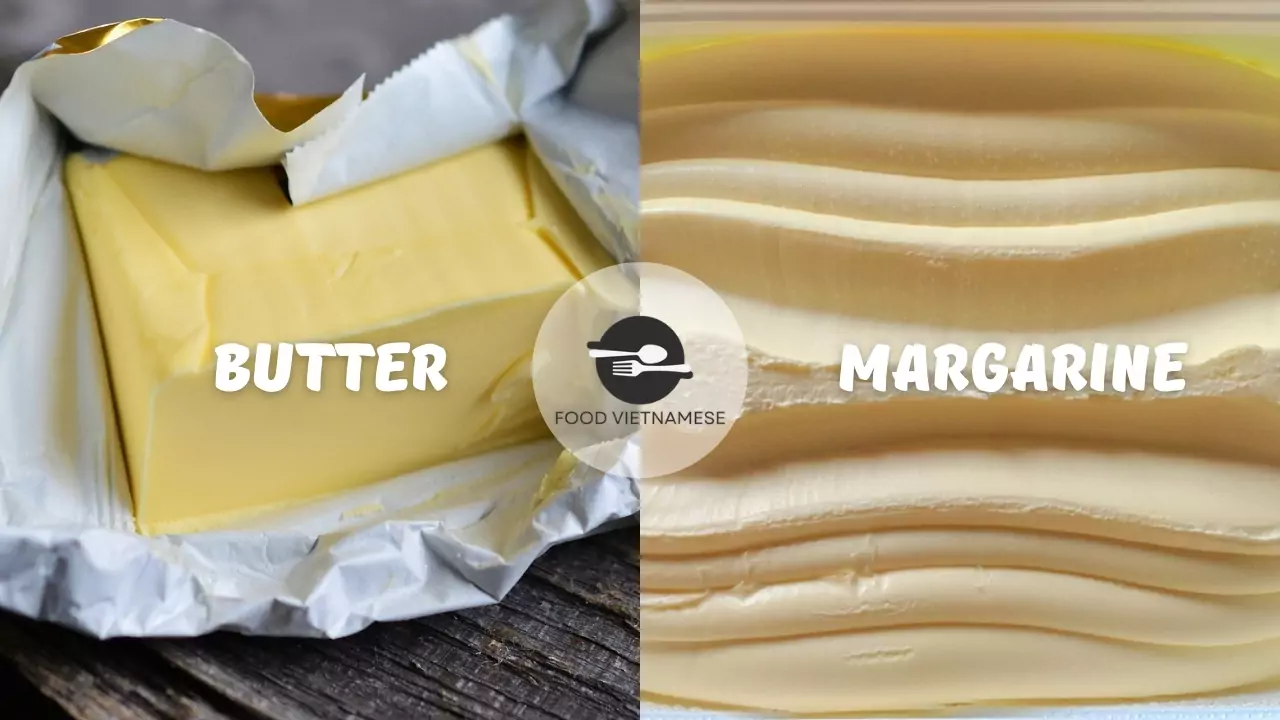In the world of spreads, the age-old debate between butter and margarine is one that evokes strong opinions and preferences. Each has carved out its place in kitchens worldwide, touted by some as the superior choice for health and taste, while others dismiss one or the other as unworthy. For many, the decision boils down to dietary restrictions, health concerns, taste, or ethical considerations, making the choice feel even more personal. Butter, a product centuries in the making, offers a rich, creamy flavor and texture that many find hard to resist. Meanwhile, margarine, with its plant-based origins and often lower cost, has been marketed as a healthier alternative, especially for those managing cholesterol levels.
Yet, many consumers may find themselves at a crossroads, trying to decipher the best option for their diets. With a growing body of evidence regarding health impacts and processing methods, this article aims to provide a thorough exploration of both butter and margarine. We will delve into health impacts, nutritional profiles, processing techniques, culinary uses, market trends, and recommendations for consumers all with the hope of shedding light on the ultimate question: Which is better?
Health Impacts of Butter and Margarine

Butter
The discussion surrounding the health impacts of butter and margarine often resembles a see-saw one side touting the benefits of natural ingredients found in butter, while the other highlights the heart-friendly properties of margarine. Each option has distinct influences on heart health, cholesterol levels, and nutritional value, leading many consumers to search for clarity.
Butter, albeit delicious, has often been viewed through a critical lens due to its high saturated fat content. A typical tablespoon of butter contains around 7 grams of saturated fat and about 31 mg of cholesterol. Experts have historically raised alarms about saturated fats, linking them to increased levels of low-density lipoprotein (LDL) cholesterol the “bad” cholesterol. However, recent studies suggest that the relationship is far more nuanced than previously believed. Intent on deconstructing prior assumptions, some researchers have indicated that the link between saturated fats and heart disease may not be as straightforward as once thought.
Conversely, margarine is often considered a healthier alternative due to its formulation from vegetable oils, aiming for a lower saturated fat content. A tablespoon of margarine typically contains around 2 grams of saturated fat and can provide beneficial unsaturated fats that contribute to better heart health. However, it’s essential to note that not all margarine is created equal. Many brands use hydrogenation, a process that can lead to the formation of trans fats, recognized for their adverse effects on heart health, including raising LDL while lowering high-density lipoprotein (HDL), the “good” cholesterol.
Thus, the key takeaway here is the importance of understanding product labels and opting for quality regardless of the choice. A careful review of ingredients ensures healthier choices, helping consumers navigate the tightrope walk towards a balanced diet. As always, moderation is paramount, and informed choices lead the way in determining a personal preference in the butter versus margarine debate.
Saturated Fat and Heart Health
When exploring saturated fat and its implications on heart health, it’s crucial to examine the broader context surrounding dietary fats. There is often a misconception that all fats are detrimental, but the truth is more intricate. Butter, derived from cream, is naturally high in saturated fat, which has been a source of controversy. A tablespoon of butter includes around 7 grams of saturated fat, which some research links to elevated LDL cholesterol levels, possibly increasing the risk of heart disease.
However, it is worth noting that more recent studies challenge the long-standing vilification of saturated fats. These studies argue that saturated fats may not be the lone culprits behind heart disease. In fact, researchers from the American Journal of Clinical Nutrition suggest that the source of fat, whether from dairy or plant origins, plays a significant role in health outcomes. For example, butter from grass-fed cows is often richer in omega-3 fatty acids, vitamin K2, and beneficial fatty acids like conjugated linoleic acid (CLA), which have been associated with various health advantages.

Butter
On the other hand, while margarine is generally lower in saturated fat, it is paramount to pay attention to its hydrogenated nature. The hydrogenation process, although useful for achieving a desirable texture, often introduces trans fats, which can significantly jeopardize heart health. Trans fats are linked to inflammation, insulin resistance, and various cardiovascular diseases. Such findings prompted the Food and Drug Administration (FDA) to mandate a reduction in trans fats in food products, considerably altering the market landscape.
Thus, the essential balance lies in choosing the right types and amounts of fats. While some might conclude that margarine offers a heart-healthy alternative due to its unsaturated fat content, those who indulge in butter within moderation, especially high-quality options, can still enjoy flavor without compromising their health.
| Butter | Margarine | |
|---|---|---|
| Saturated Fat | 7 grams per tablespoon | 2 grams per tablespoon |
| Trans Fat | 0 grams | Varies (check labels) |
| Cholesterol | 31 mg | 0 mg |
| Additional Nutrients | Varies (vitamin A, CLA) | Often fortified with vitamins A & D |
The Role of Trans Fats in Margarine
Trans fats have evolved as a focal point in discussions about dietary health, particularly regarding margarine. While margarine was initially heralded as a heart-healthy alternative to butter, its production methods often brought along inflammatory trans fats that posed significant health risks. These fats are primarily formed during the hydrogenation process, which turns liquid vegetable oils into solid forms to achieve a more desirable consistency.
Historically, many margarine products contained partially hydrogenated oils, rife with trans fats that increased the risk of cardiovascular disease. The key mechanism here lies in trans fats’ ability to raise harmful LDL cholesterol while simultaneously lowering beneficial HDL cholesterol, leading to a double whammy in terms of heart health risks. The American Heart Association has even gone so far as to recommend that Americans avoid trans fats altogether, illustrating the serious health implications tied to their consumption.
In response to the growing concern over trans fats, many manufacturers began reformulating margarine to eliminate these harmful components. The shift towards producing trans-fat-free margarines was catalyzed by public awareness and FDA regulations. Many companies now use alternative methods, such as interesterification, which enables oils to achieve a solid state without the formation of trans fats.
However, the consumer must remain vigilant. Not all margarine is free of trans fats, especially older or store-brand varieties. A careful reading of labels reveals the underlying truth while a product may boast “0 grams of trans fat” per serving, it could still contain up to 0.5 grams per serving, which can accumulate over time. Therefore, it’s crucial for consumers to opt for margarines that emphasize zero trans fats, use premium-quality oils, and are enriched with phytosterols, known to reduce cholesterol absorption.
Nutritional Profiles
When weighing the nutritional profiles of butter versus margarine, it becomes apparent that both options have unique properties that can contribute positively or negatively to health depending on individual dietary needs. To simplify the comparison, here’s a summary of their nutritional profiles per tablespoon:
| Butter | Margarine | |
|---|---|---|
| Calories | 100 kcal | 75-100 kcal |
| Total Fat | 11 grams | 8-10 grams |
| Saturated Fat | 7 grams | 2-4 grams |
| Cholesterol | 31 mg | 0 mg |
| Vitamins | A, D, E, K, B12 | Often fortified with A, D |

Butter
Butter, a dairy product, is rich in fat-soluble vitamins such as A, D, E, and K, primarily because it contains natural compounds derived from cream. Additionally, certain brands of butter derived from grass-fed cows are praised for having higher amounts of omega-3 fatty acids and CLA, leading some advocates to label these butters as more nutritious.
Conversely, margarine, specifically when made from vegetable oils, boasts lower saturated fat content and zero cholesterol, making it an appealing option for those managing heart health. Furthermore, certain margarines come fortified with vitamins, creating a balance that can compete with traditional butter.
However, it is essential not to overlook the processing of these products. Butter provides a minimally processed option, while margarine may involve various chemical processes that introduce additives and preservatives that could detract from its healthfulness. As such, making informed decisions based on quality and ingredient sourcing is vital in experiencing the best that either butter or margarine has to offer within our diets.
Vitamins and Nutrients in Butter
Butter may have its critics, but its nutritional benefits are noteworthy. Particularly when sourced from grass-fed cows, butter serves as a powerhouse of essential vitamins and beneficial fatty acids, elevating it to a coveted spot in the pantry for many health-conscious consumers.
Nutritional Composition of Butter
A typical serving of butter (1 tablespoon) contains approximately:
- Calories: 100 kcal
- Total Fat: 11 grams
- Saturated Fat: 7 grams
- Monounsaturated Fat: 3 grams
- Polyunsaturated Fat: 0.5 grams
- Cholesterol: 31 mg
- Sodium: 91 mg (for salted butter)
- Vitamins:
- Vitamin A: 355 IU
- Vitamin D: 7 IU
- Vitamin E: 0.4 mg
- Vitamin K: 1.5 mcg
- Vitamin B12: 0.2 mcg
- Vitamin B3 (Niacin): 0.1 mg
Butter is particularly noteworthy for its rich content of fat-soluble vitamins, which are essential for a variety of bodily functions, from maintaining healthy eyesight to supporting the immune system. Vitamin A, for instance, plays a critical role in vision, immune function, and skin health. Additionally, the presence of conjugated linoleic acid (CLA) in butter has been linked to potential fat loss and anti-cancer properties, making it a compelling choice for those seeking health benefits.
Moreover, the fatty acids present in butter are essential in assisting the body in absorbing and utilizing fat-soluble vitamins. This synergy between fat and vitamins highlights the nutritional whole that butter can offer, especially when enjoyed in moderation.
Nutritional Composition of Margarine

Margarine
While butter boasts its rich mouthfeel and heritage, margarine often steps into the spotlight as a more heart-conscious option. Particularly in its non-hydrogenated forms, margarine can deliver a lower saturated fat content with its own set of nutritional benefits.
Nutritional Composition of Margarine
Here’s a breakdown of the typical nutritional values per tablespoon of margarine:
- Calories: 75-100 kcal
- Total Fat: 8 grams
- Saturated Fat: 2 grams (may vary by brand)
- Monounsaturated Fat: 4 grams
- Polyunsaturated Fat: 1.5 grams
- Cholesterol: 0 mg
- Sodium: 5-15 mg (may vary by brand)
- Vitamins:
- Vitamin A: 900 IU (can vary significantly based on fortification)
- Vitamin D: 0 IU (may vary by brand)
- Vitamin E: 1.5 mg
- Vitamin K: 3 mcg
Margarine’s formulation typically aims to lower cholesterol intake with its absence of animal fats, appealing to individuals watching their heart health. Additionally, many margarine brands are fortified with vitamins A and D, ensuring that consumers receive essential nutrients even in plant-based options.
The fatty acid composition of margarine, particularly when made with a focus on healthy oils, features more monounsaturated and polyunsaturated fats, which are known to contribute to better lipid profiles. However, one must be cautious of brands that utilize hydrogenation, leading to trans fat formations that could dissipate the health benefits associated with margarine.
Thus, while margarine presents a lower-calorie and heart-friendly alternative with lowering saturated fat levels, one must ensure sourcing higher-quality brands that prioritize health benefits over mere cost-effectiveness.
Processing and Ingredients
To fully understand the distinction between butter and margarine, one must delve into their respective processing methods and ingredient lists, which greatly shape the final product’s nutritional profile.
How Butter is Made
Butter is a time-honored dairy product made predominantly from cream through a traditional process:
- Preparation: Fresh milk is collected, separated, and pasteurized to eliminate harmful bacteria.
- Churning: The cream is mechanically agitated in a churn, where fat globules clump together to form butter. This process usually takes about 45 minutes.
- Separation: Once the butter forms, it is separated from buttermilk, often resulting in a creamy, smooth product.
- Salting and Packaging: Salt is added for flavor and preservation purposes, before being packaged for distribution.
Ingredients
- Primary Ingredient: Cream (or whole milk)
- Salt (optional)
Butter is regarded as a less processed, natural food product, essentially derived from a single ingredient cream. Its relatively straightforward production process is one of its selling points, appealing to consumers seeking fewer additives and chemicals.
The Process of Making Margarine
Margarine, on the other hand, undergoes a more complex manufacturing process to achieve its desired consistency and flavor:
- Raw Materials Preparation: Edible oils are treated and refined, and if dairy is used, it is pasteurized.
- Hydrogenation: Unsaturated oils are hydrogenated under pressure, producing a solid fat.
- Emulsification: The oils and liquid components are mixed with emulsifying agents to create a stable emulsion.
- Cooling: The mixture is cooled to form a solid consistency through agitation.
- Quality Control: Rigorous quality control measures ensure the product meets safety and nutritional standards, with stabilities related to fat content.
Ingredients
- Primary Ingredients: Vegetable oils (can be palm, soybean, canola)
- Emulsifiers and fortifying agents (often added)
Margarine typically involves an array of additives to achieve factors like flavor, shelf stability, and texture, resulting in a more complex ingredient list compared to butter. For consumers concerned about food processing, this can raise apprehensions regarding the overall healthiness of margarine options.
In summary, the contrast between butter and margarine fundamentally relates to their ingredient lists and processing methods. Butter’s simpler, natural approach appeals to many consumers, while margarine must rely on strategic formulations to provide alternatives without compromising on taste. Choosing between the two might emerge as a matter of balancing personal values around processing with the emphasis on nutritional needs.
Culinary Uses
When it comes to culinary applications, butter and margarine occupy unique niches within the kitchen. Whether baking a pie, sautéing vegetables, or spreading on toast, the proper choice can greatly influence the outcome of a dish.
Cooking and Baking with Butter
Butter’s deep, rich flavor and creamy texture make it a go-to for baking and cooking. Here are some key advantages of using butter in the kitchen:
- Flavor and Aroma: The inherent sweetness of butter complements various recipes, enriching the taste of cookies, cakes, and savory dishes alike.
- Texture: The high-fat content of butter contributes to a flaky texture in pastries and a moist crumb in cakes, providing desirable qualities in baked goods.
- Melting Characteristics: Butter melts at a lower temperature than margarine, which can impact the spreadability of cookies and the flakiness of pie crusts.
- Cooking Applications: Butter is preferred for sautéing and frying, as it adds flavor and can withstand moderate heat without burning.
Cooking and Baking with Margarine
Margarine, while often viewed as a substitute for butter, offers its advantages in cooking and baking:
- Substitution: Margarine can replace butter in most recipes, particularly where a non-dairy option is required.
- Variability in Fat Content: Margarine’s fat content can vary, which may influence the texture of baked goods. Softer, spreadable margarines might lead to thinner cookies, for example.
- Health Considerations: Margarine can be chosen for its heart-healthier profile, appealing to those looking to reduce saturated fat intake.
- Use Cases: For spreading and cooking where a softer texture is preferred, margarine offers convenience without compromising functionality.
Butter vs. Margarine: Which Is Better for Baking?
In terms of baking, butter generally receives higher accolades for several reasons:
- Flavor: Nothing quite matches the rich flavor imparted by butter in baked goods.
- Texture and Structure: Butter’s fat content creates a more desirable flakiness in pastries and a tender crumb in cakes than margarine.
- Consistency: Butter ensures consistent results when using methods that require creaming due to its ability to incorporate air effectively.
While margarine can serve its purpose in certain contexts, particularly for those avoiding dairy, its flavor and textural attributes usually do not measure up to those offered by butter.
In conclusion, it is clear that both butter and margarine have viable culinary applications. The choice largely hinges on flavor preferences, dietary needs, or particular recipe requirements. With a growing diversity of options available, consumers can continue finding the perfect match for their cooking and baking needs.
Popularity and Dietary Trends
The dynamic nature of dietary trends has significantly influenced the popularity of butter and margarine in our kitchens over the years. Factors such as the evolving perception of fats, health implications, culinary applications, and consumer preferences all play vital roles in shaping these trends.
Initially, butter faced scrutiny due to its saturated fat content, leading to the rise of margarine as a perceived healthier alternative. Marketed as a heart-friendly option, margarine saw increased adoption, particularly as consumers became more calorie-conscious and health-aware.
Recently, however, there has been a resurgence in butter’s popularity, particularly varieties made from grass-fed cows. Consumers have become increasingly aware of the nutritional benefits associated with high-quality butter, such as omega-3 fatty acids, vitamins K2, and other beneficial nutrients. Many are gravitating towards butter, opting for it as a less processed alternative when compared to margarine, which can be laden with additives.
As concerns about fat consumption continue to grow, margarine has adapted by promoting trans-fat-free options and emphasizing the use of healthier oils. The availability of margarine varieties enriched with omega-3 fatty acids and plant sterols adds to its appeal as a heart-healthy supplement to meals.
Both butter and margarine reflect the pressing need to align food choices with emerging nutritional science. As public perception shifts, brands are increasingly focused on balancing flavor and nutrition both working to cater to an audience demanding higher-quality fats while navigating dietary restrictions and ethical considerations.
The current trends indicate a growing acceptance of both options within personal dietary preferences. Awareness of processing methods is paramount while selecting either butter or margarine. Consumers are invited to be mindful of sourcing the highest quality products that align with their health needs and culinary desires.
Shifting Attitudes Towards Butter
Over the years, attitudes towards butter have experienced significant metamorphosis. Once seen as a dietary villain due to its saturated fat content, recent nutritional studies reveal a more balanced perspective that prioritizes the nutritional benefits of butter, especially when sourced from grass-fed cows.
Historically, butter had a tumultuous relationship with health professionals. As veganism and health movements gained traction, it became an easy target in discussions about dietary fats. Furthermore, margarine captured attention as the go-to spread for those seeking lower-calorie options, especially after manufacturers promoted it as a healthier alternative.
Interestingly, newer research highlights the complexities of saturated fat, prompting a reevaluation of butter’s place in the diet. Many are now celebrating the health benefits associated with high-quality butter, such as its potent vitamins and fatty acids that foster better physical well-being.
Amid shifts in dietary trends, consumers have begun prioritizing minimally processed foods, leading to a greater appreciation for butter’s simplicity. Additionally, the push towards local and organic foods has enabled better butter options that deliver both taste and nutrition qualities that many believe surpass those found in margarine.
This renewed resurgence of butter encourages a conversation around moderation and sustainability. The embrace of butter as part of a balanced diet stands in contrast to dietary restrictions that can result from strictly prohibitive approaches. The lesson? Embracing all-natural, minimally processed foods provides a refreshing outlook on dietary choices while still celebrating flavor.
The Rise of Plant-Based Alternatives
The increasing emphasis on plant-based diets has resulted in an undeniable rise in the popularity of plant-based alternatives to both butter and margarine. Health, environmental, and ethical considerations fuel this trend, pushing consumers to seek options that align with their values.
Popularity and Dietary Trends
- Health Awareness: As research underscores the benefits of plant-centric diets in lowering chronic disease risk, individuals are increasingly driven towards oils and fats derived from plant sources. This shift corresponds with rising awareness of heart health and cholesterol management, leading many to prioritize virgin oils and plant-based spreads.
- Environmental Responsibility: Recognizing that animal agriculture often contributes to greenhouse gas emissions, many are choosing plant-based fats over dairy options. Studies indicate that shifting to plant-based diets can lead to a significant reduction in an individual’s carbon footprint.
- Ethical Consumption: Plant-based alternatives align with consumers’ convictions regarding animal welfare. The rise of veganism and concerns about the treatment of livestock foster a growing market for alternatives that cater to these preferences.
- Market Evolution: The plant-based sector has transformed significantly, with products like vegan butter and grain-based spreads gaining ground in mainstream grocery stores and restaurants. This broadening market translates to more diverse selection, ensuring that consumers have access to healthier alternatives without sacrificing taste.
Nutritional Comparison: Plant-Based Butter vs. Margarine
As the market flourishes, the ongoing comparison of plant-based butter and margarine highlights distinct differences:
- Ingredients: Plant-based butter is often made from oils rich in monounsaturated fats, such as olive or avocado oil. On the other hand, margarine may still incorporate partially hydrogenated oils, which contain potential health risks.
- Health Impact: Typically, plant-based butter contains no cholesterol and may provide healthy oils with a more favorable fatty acid profile. However, as with margarine, checking for trans fats in processed varieties is critical.
Recommendations for Consumers
As consumers navigate this evolving landscape, keeping the following guidelines in mind can help ensure healthy choices:
- Prioritize Quality: Seek out plant-based butter options derived from quality oils while avoiding products with partially hydrogenated oils. For margarine, select varieties labeled as trans-fat-free with wholesome, natural ingredients.
- Consider Usage: Depending on intended use, consumers might choose plant-based butter for baking or cooking, while margarine may excel as a spread. Knowledge of individual preferences will play a critical role in decision-making.
- Moderation: Regardless of the chosen alternate, moderation remains key. Both plant-based butter and margarine can fit within balanced diets when enjoyed in appropriate amounts.
Ultimately, the growth of plant-based alternatives is emblematic of broader shifts towards healthy eating, sustainability, and ethical consumerism. For those aiming to make the best choices for health and well-being, this wealth of options offers optimism for varied dietary paths while ensuring taste and quality are preserved.
Recommendations for Consumers
Navigating the choice between butter and margarine comes down to informed decision-making that aids healthy dietary habits. Individuals should consider the following recommendations when selecting either option.
Choosing Healthier Options
- Butter: If opting for butter, consider selecting high-quality options, particularly those derived from grass-fed cows. These not only offer an enhanced flavor but are also associated with higher levels of omega-3 fatty acids and vitamins beneficial for health.
- Margarine: When choosing margarine, look for brands explicitly labeled as “trans-fat-free” and prioritizing healthy oils. Margarine enriched with plant sterols can provide added cardiovascular benefits, working to lower bad cholesterol levels without negatively affecting good cholesterol.
Understanding Labels and Ingredients
- Nutritional Information: Pay attention to serving sizes and ingredient lists. Quality products will minimize additives and focus on the wholesome ingredients you recognize.
- Avoiding Trans Fats: Recognize the importance of reading labels closely. Don’t just rely on terms stating “0 grams trans fat,” as this may still indicate leftover trans fats per serving. Brands should explicitly state the absence of trans fats.
- Experiment with Alternatives: Beyond butter and margarine, incorporate healthier fats like avocado, olive oil, or nut butters into your diet. Variety not only diversifies your nutrient intake but can elevate meals with different flavors.
In the end, the choice between butter and margarine is not just a matter of health claims but encompasses personal preferences, dietary restrictions, and culinary needs. Both options have their strengths and weaknesses, shaped by factors including processing methods and nutritional profiles. While butter offers rich flavors and essential fat-soluble vitamins, margarine can contribute healthier alternatives when chosen wisely.
As consumers become more educated on issues surrounding fats and health, the path forward is colorful and varied. Whether it’s embracing grass-fed butter’s timeless appeal or exploring the modern convenience of margarine and plant-based alternatives, the best choice depends on an individual’s lifestyle and health goals. By prioritizing quality, ingredient transparency, and moderation, anyone can enjoy the benefits of either product while contributing to a balanced and satisfying diet.

